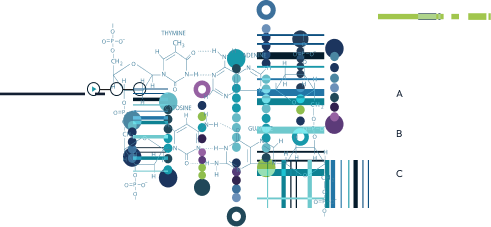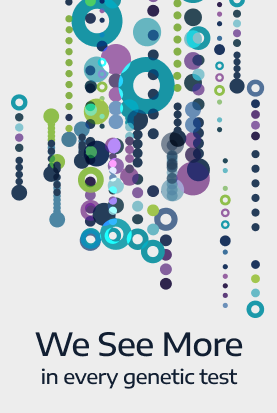News Center

Cancer predisposition variants: looking beyond BRCA1/2
- By Variantyx, Inc
- Posted in Clinical Education
Everyone has some risk of developing cancer. In fact, nearly 40% of people will be diagnosed with cancer at some time during their lifetime. Most often cancer is caused by mutations that arise as a consequence of DNA damage due to factors such as smoking or exposure to UV light, or as the result of aging. However, in 5-10% of cases, cancer is the result of hereditary variants. Having one of these cancer predisposition variants, inherited from either or both parents, does not mean that we will develop cancer, but it does mean that we have an increased risk of developing cancer during your lifetime. Genetic testing can identify if we’re are at risk before cancer develops. So we can adopt increased surveillance or other proactive management strategies to potentially avoid or minimize the impact of cancer.
The role of BRCA1 and BRCA2
You’ve likely heard of the BRCA1 and BRCA2 genes, which stand for Breast Cancer Associated 1 and 2 respectively. Their identification led to the launch of the first clinical testing service for hereditary cancer in 1995. In the 20+ years since their discovery, more than 4,000 variants that lead to an increased risk of breast and/or ovarian cancer have been identified in these two genes. Both BRCA1 and BRCA2 continue to be the focus of most predisposition testing for breast and ovarian cancer, but there are other cancer predisposition variants that are now known to cause a similar risk including variants in BARD1, BRIP1, CDH1, CHEK2, PALB1, PTEN and others. There are even more genes with variants that are known to cause other types of cancers including colorectal cancer, melanoma, pancreatic cancer, prostate cancer and more. When selecting a proactive genetic screening test it’s important to consider how well the test covers BRCA1 and BRCA2 variants, but also how well it covers cancer predisposition variants in other genes.
Not all genetic tests are created equal
At home DNA tests are everywhere these days, offering to provide information about not just our ancestry but also our health. It’s important to understand that direct-to-consumer testing services like 23andMe and others look at only a small number of variants for each condition. For BRCA1 and BRCA2, that number can be as low as only 3 variants. And oftentimes the variants are only relevant for individuals of specific descent such as European or Ashkenazi Jewish.
Clinical tests provide significantly more comprehensive and reliable results when compared to direct-to-consumer tests, but even they are affected by the choice of sequencing technology used. Most employ technologies that cover only 0.02% to 2% of an individual’s DNA. This means that certain types of complex variants will be missed, and that certain genes might not be included at all.
The difference seen with WGS based testing
In contrast, with a whole genome sequencing (WGS) based test like Genomic Inform®, our entire DNA is sequenced so that these blind spots are avoided. The result of using better sequencing technology is that hereditary cancer testing isn’t limited to 3 variants in 2 genes. All of the more than 4,000 pathogenic BRCA1 and BRCA2 variants will be identified. Along with thousands of other cancer predisposition variants in other genes that are known to increase the risk of developing cancer.
